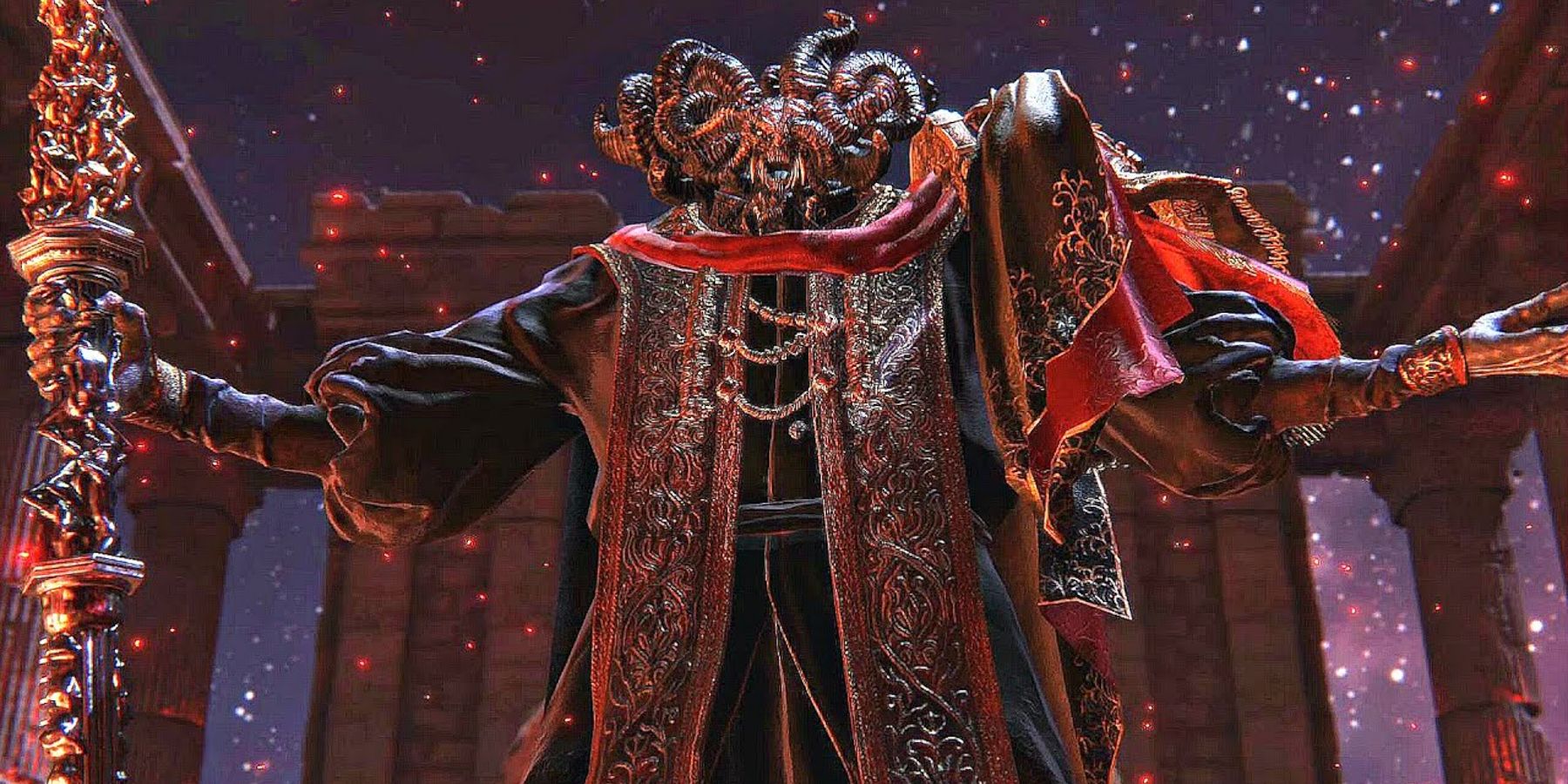A new video asks why FromSoftware chose to include secret boss Mohg, Lord of Blood, in two different Elden Ring locations. Mohg is a key figure in Elden Ring's lore and one of the game's most challenging bosses. However, while his fight in Moghwyn Palace may be very memorable, Mohg is also found deep below Leyndell in the Subterranean Shunning-Grounds guarding another secret location. The reasons why likely go well beyond lore and can only be explained by From Software's development process for Elden Ring.
In lore, there's a very simple explanation for Mohg appearing twice in Elden Ring. It's not an uncommon occurrence, after all. According to the video from Zullie the Witch, the best example of this is Mohg's own brother, Morgott. Morgott is able to project himself into multiple locations in the world, while he himself never leaves the base of the Erdtree. Zullie notes that Mohg's Subterranean Shunning-Grounds fight even plays a music track named "Omen Illusion," indicating the true Mohg is the one in Moghwyn Palace.
But Zullie further explains that while From Software may have done the work to make Mohg's two appearances make sense in-universe, there's likely a deeper explanation. Zullie theorizes the Mohg model was potentially not a named character. The model itself is referred to as "GreaterDemon" in Elden Ring's files, implying it may have been much like a standard Omen opponent at some point in development. Zullie has even discovered that this GreaterDemon model is in the loadlist for locations including Murkwater Catacombs and Raya Lucaria, though he no longer is found there.
Further evidence of FromSoftware changing its plans regarding Mohg stem from the story surrounding Miquella, one of Elden Ring's demigods. As Elden Ring players know, Miquella was kidnapped from Mohg as the Lord of Blood attempted to raise Miquella to a god with Mohg as his consort. However, there's evidence Miquella was originally planned to be kept within the Haligtree, helping his sister Malenia during her fight. There's even evidence Miquella was originally planned to be voiced, meaning Mohg's storyline with Miquella was added later.
Long story short, Mohg was potentially once simply another Omen enemy in the world found in different locations. What led to FromSoftware's changes after that isn't clear, but Mohg became a named boss and a key part of Miquella's story as a result. He was left in the Subterranean Shunning-Grounds, however, either forgotten or because FromSoftware felt he was the best choice.
What makes this part of Elden Ring so interesting is it's very easy to imagine the game if Mohg didn't exist as a boss. He's largely absent from the lore and story of Elden Ring, outside of Miquella's fate. If Mohg wasn't a boss, however, it's easy to imagine Miquella having been absorbed by the Haligtree instead. That may have even been the original plan, with Miquella's body recognizable in the tree. Mohg's role in Elden Ring certainly took the game in a darker, unfortunate direction. That's very fitting for FromSoftware, though.
Elden Ring is available now on PC, PS4, PS5, Xbox One, and Xbox Series X/S.

